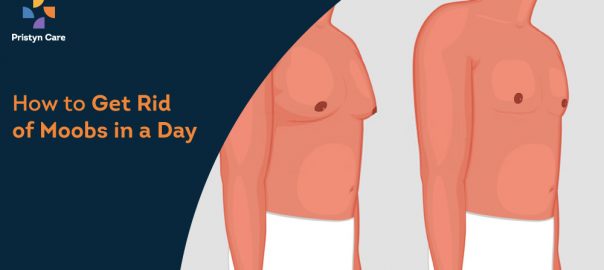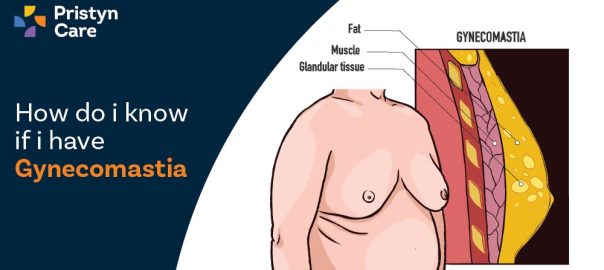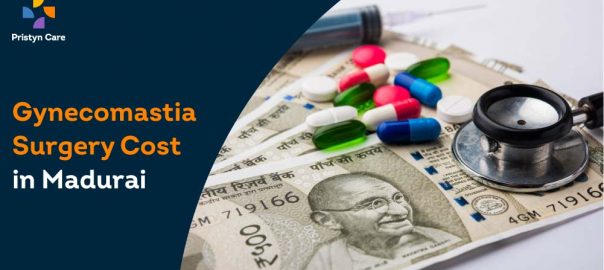![]() Views: 999
Views: 999
Lipomastia vs Gynaecomastia
It is important to note that these conditions' impact is not limited to physical health; they could lead to psychological distress and social challenges as well, thus affecting an individual's self-esteem and overall quality of life.
Dedicated Support at Every Step!
Our Doctors are available 24 hours a day, 7 days a week to help you!
In this article, we will strive to shed light on these conditions, helping you differentiate between lipomastia and gynaecomastia by exploring their causes, symptoms, diagnosis, treatment options, and implications on one's life.
Table of Contents
Understanding Lipomastia
Lipomastia is a condition where there is an accumulation of fatty tissue in the male breast area. This condition can often be mistaken for gynaecomastia as it results in abnormal enlargement of the chest. However, lipomastia is primarily characterised by soft, movable lumps that are generally minimal pain.
Causes of Lipomastia
The exact causes of lipomastia have not been scientifically pinpointed yet, however, certain contributing factors have been identified:
- Genetic Predisposition: If there exists a family history of lipomas or similar conditions, it may increase the chances of developing lipomastia.
- Obesity: Excess body fat can lead to increased fat deposits in various areas of the body, including the breasts.
- Hormonal Imbalances: Changes in hormone levels, especially those related to fat metabolism can play a significant role.
- Age: Lipomastia is more common among middle-aged individuals; however, it can occur at any age.
- Physical Trauma: Previous injuries to the chest area can lead to localised fat deposition.
Symptoms of Lipomastia
People with lipomastia typically present certain symptoms:
- Soft Lumps: The most common symptom is the presence of soft, movable lumps beneath the skin.
- Minimal pain Growth: Unlike gynaecomastia, which may involve tenderness or pain due to glandular tissue proliferation, the growth in case of lipomas is usually minimal pain.
- Slow Growth: Lipomas generally grow slowly over time and do not cause significant discomfort unless they start pressing on nearby structures.
Understanding these characteristics is important to differentiate lipomastia from various other conditions that affect breast tissue.
No Cost EMI, Hassle-free Insurance Approval
Understanding Gynaecomastia
Gynaecomastia is a condition where there is a noticeable enlargement of breast tissue in males. Unlike lipomastia, which is due to an increase in fatty tissue, gynaecomastia results from an increase in firm glandular tissue. It can affect either one or both breasts and offers different symptoms compared to lipomastia.
Causes of Gynaecomastia
Various factors can lead to gynaecomastia, such as:
- Hormonal Changes: A primary cause of gynaecomastia is an imbalance between testosterone and oestrogen levels. Life stages like puberty and ageing often trigger these hormonal shifts.
- Medications: Anti-androgens, anabolic steroids, and certain types of antidepressants may contribute to the development of gynaecomastia.
- Health Conditions: Medical issues like liver disease, kidney failure, hyperthyroidism, and tumours affecting hormone levels can also cause this condition.
- Substance Use: Consumption of alcohol and recreational drugs like marijuana or heroin can be linked to gynaecomastia.
Symptoms of Gynaecomastia
People with gynaecomastia often experience these common symptoms:
- Breast Tenderness: Many men report a sense of tenderness or sensitivity in their breast region.
- Firm Lumps: Unlike lipomas (soft lumps), those with gynaecomastia often discover firmer lumps which are more centrally located beneath their nipple.
- Nipple Discharge: In some instances, discharge from the nipples might occur.
Diagnosis and Treatment of Lipomastia
Identifying lipomastia generally involves a comprehensive physical examination by a doctor who will assess the characteristics of the breast tissue. If required, imaging studies like ultrasound or MRI might be used to differentiate between lipomastia and other conditions.
MBBS, MS-General Surgery, M.Ch-Plastic Surgery, DNB-Plastic Surgery
₹2000₹1000Consultation Fee
M.B.B.S, M.S. (General Surgery), M.Ch. (Plastic Surgery), DrNB (Plastic Surgery)
FREEConsultation Fee
MBBS, M.S.(Gen. Surgery), DNB (Gen. Surgery), F.MAS, D.MAS, FAIS, FALS, FIAGES
FREEConsultation Fee
Dr. Balasundaram Kutty Alalasundaram
MBBS, DNB-General Surgery, M.Ch- Plastic Surgery
FREEConsultation Fee
Treatment of Lipomastia
Lipomastia does not typically require treatment unless it causes cosmetic concerns or discomfort. However, for those who choose to seek treatment, options include:
- Surgical Removal: If the lipoma becomes troublesome or significantly enlarges, surgical excision might be suggested.
- Liposuction: This is a minimally invasive procedure that can effectively remove excess fat from the breast area, proving beneficial in cases of lipomastia.
By understanding the unique characteristics of gynaecomastia and lipomastia, individuals can seek appropriate medical advice and treatment to manage these conditions effectively.
Diagnosis and Treatment of Gynaecomastia
Gynaecomastia is diagnosed primarily through a clinical assessment by a doctor, who evaluates the characteristics of the breast tissue. They will also ask about your medical history and any medications you are taking. Blood tests might be conducted to check hormone levels or identify any underlying health issues.
Managing gynaecomastia depends on its severity and can involve:
- Observation: If gynaecomastia is mild or expected to resolve, such as during puberty, simple monitoring may be enough.
- Medications: Hormonal treatments may be prescribed to address any underlying imbalances.
- Surgery: For persistent cases causing significant discomfort or psychological distress, surgical options such as mastectomy (removal of glandular tissue) or liposuction may be considered.
It is important to note that the treatment modalities for lipomastia, an increase in fat tissue, can differ from those for gynaecomastia.
Living with Lipomastia & Gynaecomastia: The Psychological & Social Impact
Living with either lipomastia or gynaecomastia can have significant psychological implications. Individuals affected by these conditions often battle feelings of embarrassment and self-consciousness about their appearance. This can lead them to withdraw socially or avoid situations where they might need to expose their chest, like at swimming pools or gyms.
The psychological impact is particularly pronounced amongst adolescents who may face bullying or stigma due to their condition. Furthermore, if these conditions are not addressed adequately, they can lead to severe mental health issues like anxiety and depression.
Therefore, understanding the nuances between lipomastia and gynaecomastia is not only vital for medical management but also for providing emotional support to those affected by these conditions, highlighting the importance of comprehensive healthcare.
To summarise, it is essential to understand that lipomastia and gynaecomastia, while both conditions involve abnormal breast enlargement in males, they differ in their causes, symptoms, diagnosis, and treatment options. This understanding is crucial for effective management and providing support to those affected. If you notice any abnormalities in your chest appearance, please do not hesitate to seek immediate advice from your family doctor. Moreover, continuous research in this field will undoubtedly enhance our understanding of these conditions and foster the development of improved management strategies, ultimately benefiting those affected by these conditions.
FAQs
1. Can medication cause lipomastia or gynaecomastia?
Certain medications can indeed cause gynaecomastia by affecting hormone levels. However, medication does not directly cause lipomastia but can contribute to weight gain which might lead to fat deposition in the breasts.
2. Are there any common triggers or causes for both lipomastia and gynaecomastia?
Both conditions can be influenced by hormonal imbalances. However, lipomastia is often associated with obesity while gynaecomastia can be linked to various causes such as ageing, use of certain medications, and conditions that affect the hormone levels.
3. Can lipomastia lead to gynaecomastia?
No, lipomastia and gynaecomastia are separate conditions. Lipomastia is caused by excess fat and does not affect your hormone levels. Gynaecomastia, however, is caused by hormonal imbalances that lead to the growth of breast gland tissue.
4. Can diet help in reducing both lipomastia and gynaecomastia?
While diet can help reduce fat deposits in the body (including the breasts), they may not affect the glandular tissue that characterises gynaecomastia. However, a healthy lifestyle is always beneficial and can improve overall health and well-being.
5. Can weight loss help with lipomastia or gynaecomastia?
Weight loss can significantly help reduce lipomastia as it is caused by excess fat in the body. However, for gynaecomastia, weight loss might not be as effective because it involves glandular tissue growth due to hormonal imbalances.
6. How does age factor into lipomastia vs gynaecomastia?
Both lipomastia and gynaecomastia can occur at any age. However, gynaecomastia is often seen in boys going through puberty when hormone levels fluctuate. Lipomastia is more commonly associated with adults who are overweight or obese.
7. Can lipomastia or gynaecomastia lead to breast cancer in men?
Breast cancer in men is rare. While gynaecomastia does not increase the risk of developing breast cancer, men with gynaecomastia do have a slightly higher risk than men without gynaecomastia. Lipomastia does not increase the risk of breast cancer.
8. How can I prevent lipomastia and gynaecomastia?
Preventing lipomastia involves a healthy diet and regular exercise to maintain a healthy weight. Preventing gynaecomastia could be trickier as it involves hormonal imbalances; however, avoiding illegal drugs and alcohol can help as these can affect hormone production.
9. Are there any side effects of surgery for lipomastia vs gynaecomastia?
Like all surgeries, liposuction or breast reduction surgery for lipomastia or gynaecomastia carry some risks, including infection, scarring, and anaesthesia complications. It is essential to discuss these with your doctor before deciding on surgery.
10. Can lipomastia or gynaecomastia recur after treatment?
Lipomastia may recur if you gain weight after treatment. In the case of gynaecomastia, recurrence is unlikely unless there are ongoing hormonal imbalances.












